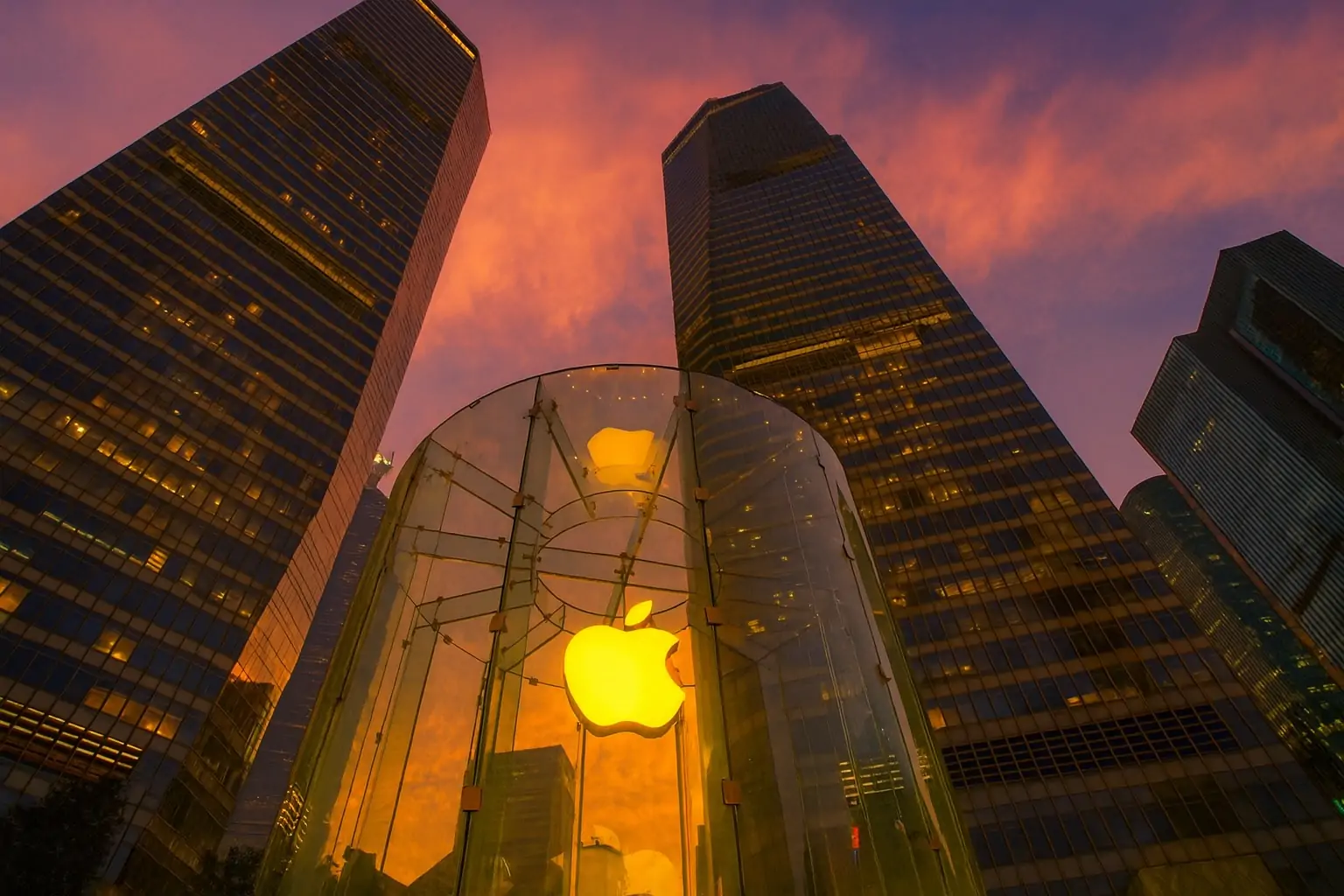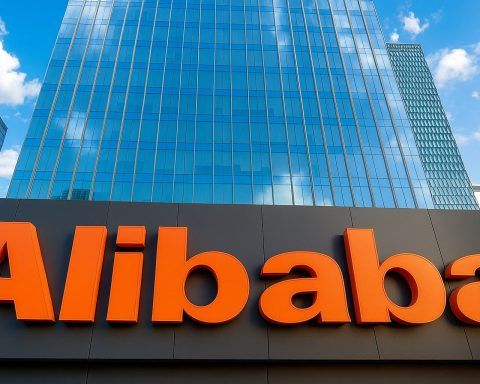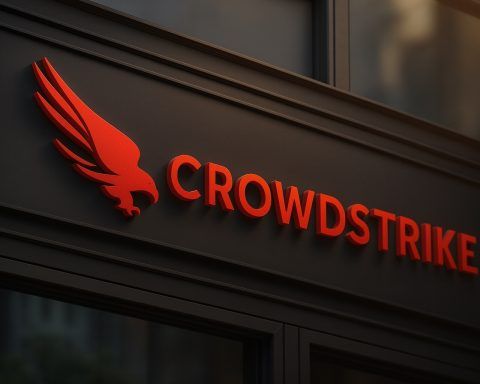Apple (AAPL) Stock Hits Record Highs in November 2025
Apple Inc. (NASDAQ: AAPL) shares have been on a tear in mid-November 2025, hovering near all-time highs. The stock closed at $272.95 on November 13, just shy of its 52-week peak of $277.32 set at the end of October [1]. This caps a roughly 1–2% gain over the past week, as AAPL continued its post-earnings rally. In fact, the recent surge pushed Apple’s year-to-date performance into positive territory for the first time this year [2]. The momentum has been driven by robust demand for the latest iPhone lineup and strong quarterly earnings, propelling Apple’s market capitalization to flirt with the historic $4 trillion mark [3].
Apple briefly topped $4 trillion in market value in late October on optimism around its new products, becoming only the third Big Tech company (after Nvidia and Microsoft) to reach that milestone [4] [5]. Shares hit an intraday record of $269.89 on Oct. 28, before closing at an all-time high of $275.25 on Nov. 11 [6] [7]. The stock has gained about 13% since Apple’s September 9 product launch event [8], a turnaround that put AAPL back in growth mode despite a choppy start to 2025. With the stock now trading above key moving averages (50-day and 200-day), technical indicators point to a bullish trend [9]. Some analysts even see the rally extending further in the near term – recent chart analysis forecasts a potential upswing toward the $300+ level by early December if momentum holds [10].
Strong Q4 2025 Earnings Boost Investor Confidence
Apple’s latest financial results underscored the company’s resilience and growth, adding fuel to the stock’s rise. On October 30, Apple reported fiscal Q4 2025 (July–September) revenue of $102.5 billion, an 8% increase year-over-year, marking a new September-quarter record [11]. Quarterly diluted earnings per share (EPS) came in at $1.85, up 13% from a year ago on an adjusted basis [12]. These figures beat Wall Street expectations – analysts had forecast about $101.7B in revenue and $1.76 EPS, so Apple delivered a modest top- and bottom-line surprise [13] [14]. Following the announcement, AAPL stock ticked higher, reflecting positive investor sentiment as Apple once again exceeded forecasts [15] [16].
Key financial highlights from the quarter show broad strength. Apple achieved a record $416 billion in revenue for the full fiscal year 2025 [17], with the September quarter setting all-time highs for iPhone sales and services revenue. Gross margin remained robust at around 47%, and net income was $27.5 billion [18] [19]. Notably, Services revenue jumped 15% year-over-year in Q4 [20], reaching a new peak – a testament to the success of Apple’s digital ecosystem (App Store, Apple TV+, Apple Music, iCloud, etc.). Apple’s CFO highlighted that the company’s installed base of active devices hit a record high across all product categories [21], which bodes well for continued services growth.
Crucially, Apple’s guidance struck an upbeat tone. The company projects 10–12% revenue growth for the current holiday quarter (Q1 fiscal 2026), fueled by expected double-digit iPhone revenue growth [22]. Management forecast a healthy 47–48% gross margin and indicated plans to boost investments in artificial intelligence (AI) initiatives [23] [24]. CEO Tim Cook and CFO Kevan (Kevin) Parekh emphasized that AI enhancements will be integrated into products to improve user experience [25] – a signal that Apple is doubling down on innovation. They also expressed optimism about rebounding in China, expecting a return to growth in the Greater China region in the coming quarter [26]. (In Q4, Apple’s sales in Greater China had dipped 4% year-on-year amid a softer local economy [27].) Overall, the better-than-expected earnings and bullish outlook have reinforced investor confidence in Apple’s near-term trajectory.
New Products and Technology Updates Fueling Momentum
Apple’s recent stock performance is tightly linked to its latest product cycle, which has been met with enthusiasm from consumers. In September, the company launched its iPhone 17 lineup – including the iPhone 17, 17 Pro, 17 Pro Max, and a new ultra-thin iPhone Air model – to generally strong reviews and demand [28]. CEO Tim Cook hailed it as Apple’s “best iPhone lineup ever,” and early sales data back up the hype. In the first 10 days on the market, iPhone 17 series sales outpaced the previous iPhone 16 series by 14% in the U.S. and China [29], according to Counterpoint Research. Analysts attribute this to a sizable base of users ready to upgrade – a “pent-up pool” of hundreds of millions of older iPhones that created a real upgrade cycle in 2025 [30]. The high-end iPhone 17 Pro Max quickly sold out in many regions, with lengthy shipping delays, indicating robust demand for Apple’s pricier models [31].
Wedbush Securities analyst Dan Ives noted that iPhone 17 demand is trending 10–15% ahead of last year’s model – a “magical formula” that prompted Wedbush to raise its Apple price target (more on that below) [32]. Carriers in the U.S. have offered aggressive trade-in deals to entice upgrades despite higher sticker prices, and this appears to be paying off with strong volume [33]. In China, launch-day crowds in Beijing and record pre-orders on JD.com signaled renewed consumer interest, even as Apple faces rising local competition [34]. One wrinkle is the iPhone Air, Apple’s thinnest phone ever (just 5.6mm), which has seen mixed early results. While its sleek design could help fend off Android rivals [35], the iPhone Air’s China release was delayed by regulators reviewing its eSIM-only design (it lacks a physical SIM tray) [36]. Apple expects this delay to be temporary, but it underscores the unique market challenges in China. Globally, the iPhone Air has not (yet) sparked the same sales excitement as the Pro models – reports suggest Apple even pushed back next year’s iPhone Air launch plans due to softer uptake [37] [38]. Even so, some analysts believe the Air could still become a “surprise” hit for its target segment as more consumers see it in stores [39].
Beyond iPhones, Apple rolled out a slate of other product updates in late 2025 that strengthen its ecosystem. The Apple Watch Series 11 and AirPods Pro 3 debuted alongside the new iPhones [40], offering improved features that keep Apple’s wearables at the top of their categories. In October, Apple refreshed its Mac and iPad lineup with devices powered by the next-generation M5 chip, including a new 14-inch MacBook Pro and updated iPad Pro models [41]. These M5-based devices deliver significant boosts in performance and AI capabilities; for instance, the M5 iPad Pro is up to 5-6× faster than the M1 generation on certain tasks thanks to advanced neural engines [42] [43]. Such enhancements cater to power users and could drive a cycle of upgrades in the Mac and iPad segments (which returned to growth this year, with Mac revenue up 12% in FY2025) [44].
Apple is also continuing to invest in emerging technologies. Its ultra-premium AR headset, the Apple Vision Pro, received a mid-cycle spec bump in October 2025 – upgraded with the M5 chip and a more comfortable design – as Apple remains committed to the nascent AR/VR market [45]. While the Vision Pro is still a niche, high-priced product (with modest sales so far), it represents Apple’s longer-term bet on spatial computing. Additionally, Apple’s software platforms saw iterative improvements (iOS 26, macOS “Tahoe”, etc.), and the company has been quietly developing its AI and machine learning offerings (branded as “Apple Intelligence” features across devices). These technology updates, from chips to software to entirely new product categories, reinforce Apple’s reputation for innovation – a key factor that keeps customers loyal and willing to pay a premium, which in turn supports the stock’s strong valuation.
Supply Chain Shifts and Geopolitical Factors
Apple’s global supply chain and geopolitical environment are critical backdrop factors for investors to watch. In 2025, Apple has faced and navigated several external challenges, from trade tensions to supply chain realignments:
- Manufacturing Diversification: Apple has accelerated its effort to diversify production beyond China. The company is shifting more iPhone manufacturing to India, in part to mitigate risk from U.S.–China trade disputes. According to Reuters, Apple aims to have the majority of iPhones for the U.S. market made in India by 2026 [46]. The Cupertino giant has been in urgent talks with key suppliers (like Foxconn and Tata) to ramp up Indian production [47]. This move is a response to geopolitical realities – for instance, the U.S. government under President Trump imposed steep tariffs on Chinese exports in 2025, raising Apple’s costs on China-made devices [48]. By contrast, India currently faces much lower U.S. import duties [49], giving Apple a financial incentive to localize production. Already, Apple’s push is yielding results: India reportedly overtook China as the top smartphone exporter to the U.S. this year, thanks largely to Apple’s expanding operations [50] [51]. Moving production is not without cost (making iPhones in India can be ~5–10% more expensive than in China [52]), but Apple appears willing to absorb some higher costs to reduce over-reliance on a single country. Investors generally view this supply chain diversification as a smart long-term strategy, potentially reducing geopolitical risk for Apple.
- Tariffs and Trade Tensions: Despite diversification, Apple still produces a large share of devices in China and other Asian countries, which kept it exposed to trade war turbulence in 2025. Earlier in the year, fears of escalating U.S. tariffs on China weighed on Apple’s stock price [53]. Apple managed to blunt some impacts by sourcing more from India and possibly absorbing tariff costs to avoid hiking consumer prices [54]. So far, demand has held up – Apple’s latest iPhones “wooed back” buyers even in markets like Beijing and Moscow despite these cost pressures [55]. However, any further geopolitical flare-ups (e.g. new export restrictions, sanctions, or deterioration in U.S.-China relations) remain a risk that could impact Apple’s supply chain efficiency or production costs. Apple’s leadership is undoubtedly monitoring these issues closely and, as noted, positioning the company to be more nimble by expanding production in India, Vietnam, and other regions [56] [57].
- China Market Challenges: China is not only a manufacturing hub but also Apple’s third-largest market, and developments there have a significant effect on AAPL sentiment. In 2025, Apple faced stiff competition from Chinese smartphone makers (like Huawei and Xiaomi), some of which have made a comeback with high-end models that eat into iPhone’s market share [58]. Additionally, the Chinese government has shown a protectionist streak – for example, reportedly expanding bans on iPhone use by certain government employees (a story that emerged in late 2023) and delaying approval of new iPhone features like eSIM [59]. These factors contributed to a 4% decline in Apple’s Greater China revenue last quarter [60]. The successful iPhone 17 launch has brightened the picture, as evidenced by those launch lines in Beijing [61], but Apple’s long-term growth in China will require navigating local regulations and tastes. Encouragingly, Apple signaled it is “swallowing” extra costs from tariffs and not passing them fully to Chinese consumers [62], which could help keep iPhones affordable relative to local competitors. The company’s outlook for next quarter assumes a return to growth in China [63], implying management believes current headwinds (economic and political) are manageable.
In summary, Apple’s global footprint means that supply chain and geopolitical developments are closely intertwined with its stock performance. Thus far, Apple has shown agility – moving supply chains, lobbying against onerous tariffs, and maintaining a strong brand in key markets – allowing it to weather these challenges without major disruption. Investors will be watching for any further decoupling from China, as well as stability in regions like Europe where Apple also faces regulatory headwinds.
Regulatory and Legal Headwinds
Like other Big Tech firms, Apple is contending with increased regulatory scrutiny around the world. One of the most significant fronts is in Europe, where the EU’s new Digital Markets Act (DMA) aims to curb the market power of “gatekeeper” tech companies. Apple was officially designated a gatekeeper under the DMA in 2023, and the law would require it to allow third-party app stores and sideloading on iOS devices, and enable more interoperability of its services [64]. Apple has pushed back hard – the company is challenging key DMA provisions in EU court, arguing that forcing open its closed ecosystem infringes on Apple’s intellectual property and security principles [65] [66]. As of October 2025, hearings were underway in the European Court of Justice, with Apple seeking to delay or overturn parts of the DMA. The outcome remains uncertain, but if Apple ultimately must comply (likely by allowing rival app stores on iPhone/iPad in Europe), it could have some impact on the lucrative App Store commission model. So far, Apple has indicated compliance plans (reports suggest iOS 17.4 began laying groundwork for sideloading options in the EU [67]), but at the same time the company is clearly fighting to preserve its walled-garden approach as much as possible. Investors are keeping an eye on this because changes to App Store policies might slightly slow Apple’s Services growth or increase security costs. That said, Europe accounts for a minority of Apple’s revenue, and any sideloading concessions there may not significantly dent overall financial performance in the near term.
In the U.S., Apple continues to face antitrust scrutiny as well. While no major breakup moves have targeted Apple specifically, regulators and politicians have often discussed Apple’s dominance in app distribution and mobile payments. The company has navigated past legal challenges (like the Epic Games lawsuit over App Store fees) with minimal damage, but the climate of tech skepticism means headline risks persist. For example, any future legislation that forces Apple to open iOS more, or limits the fees it can charge developers, could weigh on Apple’s Services revenue. Additionally, consumer privacy rules and competition investigations (including into Apple’s practices around default apps and hardware integration) are ongoing issues. Thus far, regulatory pressures have not significantly slowed Apple’s growth, but they remain a factor for long-term investors to monitor.
Analyst Ratings and Wall Street Commentary
Wall Street analysts remain broadly bullish on Apple, though there’s a range of opinions on its valuation and upside. Following the impressive iPhone 17 rollout and earnings, several high-profile analysts raised their price targets for AAPL:
- Wedbush Securities: Dan Ives, a well-known Apple bull, dubbed Apple’s Q4 results and iPhone demand a “game-changer.” Wedbush hiked its price target to $310 (from around $270 prior) on expectations of a strong upgrade cycle [68]. Ives noted that Apple has found a “magical formula” with the iPhone 17 – early sales are tracking well ahead of last year – and he was “positively surprised” by the trajectory [69]. In his view, this could be the biggest iPhone upgrade wave in several years, and he believes Street estimates for iPhone unit sales in 2026 are too low [70]. Wedbush’s $310 target implies roughly 13–15% upside from current levels, and reflects confidence that Apple can continue to hit new highs into 2026.
- JPMorgan & Morgan Stanley: Other big firms echo the optimism, albeit with slightly more conservative targets. JPMorgan recently nudged its AAPL target up to $280, citing evidence of stronger year-over-year iPhone demand (such as extended wait times for new models) [71]. Morgan Stanley, another longtime Apple bull, also pointed to robust pre-orders and has indicated that it expects Apple to outperform through the holiday quarter (exact target not cited, but Morgan Stanley’s target has been in the high-$200s). These firms underline the view that Apple’s fundamentals – from iPhone sales to Services growth – remain rock-solid.
- UBS: In contrast, UBS has struck a more cautious tone. Their analysts called early iPhone 17 demand “mixed”: noting that while the Pro Max is a hit, uptake of standard models (and the new Air) might be roughly in line with last year’s cycle [72]. UBS is watching the product mix and pricing, concerned that higher-priced Pro models are the main drivers, which could mean Apple’s revenue growth is more reliant on premium customers. They have a neutral rating on Apple, suggesting the stock is fairly valued after its recent run-up.
- Zacks Investment Research: Meanwhile, Zacks currently rates Apple stock a “Hold” (Rank #3) and has flagged Apple’s stretched valuation as a reason for caution [73] [74]. Apple’s forward price-to-sales and price-to-earnings multiples are elevated compared to the broader tech sector. For instance, AAPL trades around 33× forward earnings, richer than the Nasdaq-100 average, and at nearly 9× forward sales, higher than peers like Google (Alphabet) [75] [76]. Zacks’ analysts argue that while Apple is fundamentally strong, much of the good news may already be “priced in” to the stock at these levels. They advise waiting for a better entry point, especially for value-focused investors, and currently do not have Apple in their highest-ranked buys.
Despite some valuation jitters from a minority of analysts, the consensus on Wall Street remains positive. According to financial data, the majority of sell-side ratings on AAPL are “Buy” or equivalent, with price targets often ranging from the mid-$270s up to $300+. The bullish thesis is that Apple’s unparalleled ecosystem and revenue streams justify a premium. However, it’s worth noting that even optimistic analysts are not expecting explosive upside in the near term, given Apple’s sheer size – instead, they foresee steady growth and shareholder returns (via buybacks and dividends) continuing to reward investors. The few cautious voices (like Zacks or UBS) serve as a reminder that Apple’s stock is not cheap, and any stumble in execution or demand could lead to a pullback. But so far, Apple has consistently proven naysayers wrong with resilient performance.
Market Sentiment and Macroeconomic Backdrop
Apple’s stock doesn’t exist in a vacuum – broader market sentiment and macroeconomic conditions have an influence on its performance. In 2025, the macro backdrop for tech stocks has been mixed, but generally improving:
- Interest Rates and Inflation: The past couple of years saw sharply rising interest rates as central banks fought inflation. High interest rates can be a headwind for tech giants like Apple because they make future cash flows slightly less valuable and can prompt investors to favor safer assets or value stocks. Indeed, earlier in 2025, concerns over interest rate hikes contributed to volatility in AAPL and its mega-cap peers. However, many of those worries have eased as inflation has shown signs of moderating by late 2025. While rates remain elevated compared to a few years ago, investors are adapting to a “higher for longer” rate environment. Veteran tech analyst Dan Ives argues that the market’s recent hesitation on tech due to rates is “short-sighted” [77] [78]. He believes the tech bull market still has at least two years to run, driven by fundamental demand for technology, and notes that a wave of corporate IT investment (a “CapEx super-cycle”) is underway despite the higher cost of capital [79] [80]. In short, the fear that rising rates would prick a tech bubble hasn’t played out for quality companies like Apple – their earnings growth and cash generation remain strong, and thus investor appetite for Big Tech remains high. As long as inflation is kept in check (and thus rate spikes are limited), Apple’s stock is expected to be more influenced by its own product cycle and results than by Fed policy.
- Market Sentiment and AI Mania: 2025 has been a year of remarkable gains for some tech stocks, especially those tied to artificial intelligence. Nvidia’s share price quintupled at one point, propelling its market cap to ~$5 trillion [81], amid a frenzy for AI chips. Compared to that, Apple’s ~30% rally off the summer lows looks modest, and indeed Apple has underperformed the “Magnificent Seven” mega-tech cohort in 2025 except for Amazon [82]. There’s a narrative that Apple lagged in the AI race, causing some rotation into other names – for example, Apple’s stock was essentially flat in the first half of 2025 while the market chased AI plays [83]. However, sentiment has warmed as Apple proved with its iPhone 17 cycle that it can still drive consumer excitement (AI or no AI). The $4T market cap milestone in October was a symbolic reminder that Apple remains one of the world’s most valuable businesses. Investors now seem to expect Apple will eventually find ways to capitalize on AI, even if it’s not an AI pure-play like Nvidia. The company’s enormous user base of 1.5+ billion devices could be a goldmine if Apple monetizes AI-driven services or partnerships (for instance, integrating more advanced search or assistant capabilities). Ives suggests that no “AI premium” is currently priced into Apple’s stock, and if Apple successfully rolls out monetizable AI features, it could add “$75 to $100 per share” of value over the next few years [84]. That speculative upside has started to enter the conversation, potentially improving long-term sentiment for AAPL.
- Economic Outlook and Consumer Spending: On the macroeconomic front, Apple’s fortunes are tied to global consumer spending trends. So far, despite pockets of economic uncertainty, consumer demand for Apple’s premium products has stayed resilient. Low unemployment and wage growth in many regions (U.S. especially) have supported continued spending on gadgets, even high-priced ones like iPhones. In parts of Europe and China, economic growth has been slower, but Apple managed to grow sales in most markets regardless [85]. Apple’s brand loyalty and the “must-have” nature of many of its devices give it some insulation from downturns – many consumers treat an iPhone or laptop as a necessity. That said, Apple’s management did acknowledge macro risks: they listed “macroeconomic pressures impacting consumer spending” as a challenge to watch [86]. If inflation were to flare up again or if a recession hits major markets in 2026, Apple could see more subdued growth or the need to adjust pricing. For now, the market sentiment is optimistic that the combination of a strong product cycle and stable economic backdrop will keep Apple’s results on an upward trajectory.
In summary, while higher interest rates and economic cross-currents always have the potential to introduce volatility, Apple’s recent performance shows that company-specific strengths are outweighing macro headwinds. The stock’s inclusion in virtually every major index and ETF means it can be sensitive to broad market swings, but Apple’s low debt, massive cash flow, and defensive qualities often make it a relative safe haven in the tech sector. Barring any shocking macro developments, sentiment toward AAPL remains bullish heading into 2026.
Short-Term Outlook (1–3 Months)
Over the next few months (through the turn of the year and into early 2026), Apple’s stock will be driven by the critical holiday season performance and any early indications for the next product cycle. Several factors shape the 1–3 month forecast:
- Holiday Quarter Strength: All signs point to Apple delivering a strong fiscal Q1 2026 (Oct–Dec 2025). This is typically Apple’s biggest quarter due to holiday shopping, and it will fully reflect iPhone 17 sales plus seasonal upticks in wearables and services. The company’s own guidance (10–12% revenue growth) is upbeat, and Wall Street consensus aligns with that outlook. Analysts are projecting Apple will post roughly $135–136 billion in revenue for the holiday quarter, which would be about a 9% increase year-over-year [87]. Expected earnings are around $2.62 per share, also about 9% growth from the prior year [88]. If Apple meets or exceeds these forecasts, it would mark an acceleration from recent flat growth trends and reinforce the narrative that Apple is back to solid mid-single-digit or higher growth. Such results could serve as a catalyst for the stock to test new highs in January 2026 when earnings are reported.
- Near-Term Stock Drivers: In the immediate term, Apple’s share price could continue to grind upward on positive news flow. The stock is already within a few percentage points of record levels; a burst of strong holiday sales data (for example, if early reports show iPhone 17 units selling out or App Store spending hitting records in late December) might push AAPL over the top. Some technical analysts have identified the $280–$300 range as the next resistance area for Apple if momentum persists [89]. It’s conceivable that Apple could breach its all-time highs again before year-end 2025, especially if the broader market remains stable. Additionally, any surprises – such as an announcement of an accelerated stock buyback, or a new product teaser at January’s CES (Consumer Electronics Show) or a special event – could add fuel. Apple occasionally has product reveals or updates in early January, and while none are confirmed, speculation about maybe a new AR/VR content or other accessories could swirl.
- Volatility and Risks: Investors should be mindful that short-term volatility is possible. After a strong rally, Apple’s stock might consolidate or even pull back on any hint of weakness. Potential risk triggers in the next 1–3 months include: supply constraints (if Apple can’t produce enough iPhone 17 Pro/Max to meet demand, that could limit sales and frustrate customers), macro news (e.g. a Fed rate surprise or geopolitical flare-up could hit the overall market), or simply profit-taking by investors as the year closes. One historical pattern to note is that Apple shares sometimes see a “sell-the-news” dip immediately after holiday results, especially if investors feel the best news is already baked in. However, given the current momentum, any dips might be shallow. Support levels identified by technicians include around $250 and then $237 – those are levels where buyers might step in if the stock retraces [90] [91]. On the upside, breaching $277 convincingly could set the stage for the $285-$290 zone next, with $300 as a psychological target.
- Short-Term Forecast Summary: Barring unforeseen negative developments, the short-term outlook for AAPL appears bullish-neutral. Most analysts anticipate Apple will trade modestly higher over the next quarter, supported by strong fundamentals during the holiday season. A realistic scenario is Apple stock trending in the high-$270s to low-$280s range heading into the January earnings report, with the possibility of a breakout above $280 if earnings and guidance are particularly upbeat. In the worst case of a broader market pullback, Apple could slide back into the $250s, but that would likely attract buyers given Apple’s proven durability. Overall, the next 1–3 months look positive for Apple, with the holiday quarter likely to showcase growth momentum that could carry the stock to new heights.
Long-Term Outlook (6–12 Months and Beyond)
Looking further out over the next year (and beyond into late 2026), Apple’s prospects remain robust, though the pace of gains may moderate as the stock is already near record valuations. Here’s what to expect in the 6–12 month timeframe and longer-term:
- Sustained Earnings Growth: Apple’s fundamental growth is projected to continue in 2026, albeit at a steady single-digit rate. The iPhone 17 cycle sets a strong foundation – if Apple indeed ships 240–250 million iPhones in FY2026 (as some bullish analysts predict [92]), that would be up from ~225 million or so in FY2025, translating to meaningful revenue growth. Additionally, Services revenue should keep climbing double digits annually, fueled by Apple’s expanding installed base and deeper monetization of each user. Apple’s ecosystem is extraordinarily sticky; record customer satisfaction and loyalty rates mean users who buy one Apple device often buy more and subscribe to services. The company is leveraging this via offerings like Apple One bundles, new content on Apple TV+ (which saw significant successes like 22 Emmy wins in 2025 [93]), and a growing library of games on Apple Arcade. All these contribute to higher per-user spending. Wall Street expects Apple’s earnings per share to grow through 2026, aided by both revenue growth and Apple’s massive share buybacks which shrink the share count (boosting EPS). For instance, the Zacks Consensus sees Apple’s FY2026 EPS rising around 9–10% [94] – not explosive, but very solid for a company of Apple’s size. If Apple delivers high-single to low-double-digit earnings growth in the coming year, that typically underpins a higher stock price, provided valuation multiples hold steady.
- Innovation and New Revenue Streams: Over the next 12+ months, Apple’s product pipeline and innovation efforts could start revealing new revenue streams. One area of focus is undoubtedly artificial intelligence and machine learning. Critics have argued Apple lags peers in generative AI, but Apple is investing heavily to catch up. The company has already integrated more AI-driven features (marketed as “Apple Intelligence”) across iOS, macOS, and its apps, and Bloomberg reports Apple is working on its own large-language model projects internally. There is speculation that Apple might form deeper partnerships for AI – for example, leveraging Google’s Gemini AI in search or Siri, as Dan Ives suggests [95] – which could unlock new revenue (perhaps through a share of search ad revenue or new AI-based services). Ives even posits that successful AI monetization could add $75–$100 per share to Apple’s valuation in coming years [96], though that is a longer-term hypothetical. More concretely in 2026, we might see improved AI features in Siri or Apple’s software, which could enhance user experience and keep the ecosystem attractive.
Apple’s hardware roadmap beyond the current cycle will also be closely watched. Late next year, the iPhone 18 (or whatever naming comes) will launch – it’s too early for details, but rumors suggest further camera advancements and possibly Apple’s own cellular modem for the first time. Incremental improvements here are expected; another strong cycle would be gravy for investors. On the more revolutionary side, there’s perennial chatter about an Apple Car or autonomous vehicle project (Project Titan). Some reports suggest Apple could debut a car as early as 2026, though nothing official has been announced [97]. While it’s not likely impacting the 12-month outlook, any concrete news on an Apple Car (or other new product category) could significantly alter Apple’s long-term growth profile and would surely excite the market. More immediately, Apple might release a second-gen Vision Pro in late 2026 or 2027 with a lower price point, aiming to expand its AR/VR footprint. These future opportunities – from AR wearables to possibly automotive – provide a narrative of long-term optionality that supports Apple’s lofty valuation.
- Competitive and Regulatory Risks: In the long run, Apple will need to navigate some challenges to maintain its growth trajectory. Competition is intensifying across various fronts. In smartphones, rivals like Samsung globally and Huawei/Xiaomi in China are pushing innovation (Huawei, for instance, managed to launch new 5G phones despite sanctions, posing a renewed challenge in China). Apple’s premium market share could be tested if competitors offer compelling devices or undercut on price. Moreover, in services, Apple faces competition from the likes of Spotify (music), Netflix/Disney (streaming video), and others – meaning it must keep investing in content and features to stay ahead. On the regulatory side, as discussed, decisions in the EU or potential US actions could impose changes that slightly slow Apple’s services cash cow (e.g., lower App Store fees, allowing third-party app stores, etc.). Apple’s ability to adapt will be key; so far it has shown it can comply with new rules (like embracing USB-C ports due to EU regulation) without hurting its brand or margins. But investors should keep an eye on antitrust developments that could force structural changes in how Apple operates its ecosystem.
Another consideration is market saturation. Some analysts worry that Apple’s core markets (high-end smartphones, mature economies) are saturated – meaning growth has to come from getting customers to pay more (higher average selling prices, more services) rather than huge expansion in unit sales. Apple has indeed masterfully increased ASPs over time and grown services, but there is a ceiling to how far that can go without new markets or products. The company is pushing into emerging markets like India (where it saw record sales growth in 2025 [98] and opened its first retail stores), which could provide the next leg of user growth. Still, sustaining double-digit growth long-term will require either breakthrough new products or tapping completely new customer segments. This is part of why Apple’s R&D spending is at all-time highs – it’s actively exploring what’s next to avoid stagnation.
- Shareholder Returns and Valuation: Over 6–12 months, Apple’s stock performance will also depend on valuation adjustments. At around 33× forward earnings [99] and a market cap near $4 trillion, Apple is the most valuable public company alongside a couple of peers. It’s unlikely to double or triple in a year (that would imply exceeding $8 trillion, which is hard to fathom in the near term). Instead, expectations are for moderate upside: many analysts see Apple’s stock in the $300–$330 range within 12 months, which would be roughly 10–20% higher than current levels. This is predicated on continued earnings growth and possibly a slight easing of the valuation (i.e. the P/E might come down a bit if earnings rise, keeping the price increase in check). Apple will also keep enhancing shareholder value through buybacks and dividends – the board announced a $0.26/share quarterly dividend for November 2025 [100], and massive share repurchases remain a core strategy. These actions provide support to the stock and make long-term holding attractive, effectively returning capital to investors.
Taking all these factors into account, the long-term outlook for Apple is positive. Apple is expected to remain a profit machine with a fortress balance sheet, which gives it flexibility to invest in new opportunities and weather any storms. The company’s ability to delight customers and lock them into its ecosystem should translate into steady revenue and cash flow for years to come. While the era of lightning-fast growth might be over due to Apple’s scale, it’s not out of the question for Apple to surprise to the upside – for instance, if a new product category (AR glasses, AI services, etc.) takes off or if an existing segment (like wearables or services) accelerates more than forecast. Conversely, investors should be mindful of the risks like competition and high expectations. Apple’s stock, at these valuations, does carry the implication that the company must execute near-flawlessly. Any significant stumble (say, an iPhone that flops or a delay in a major product) could cause a noticeable stock pullback.
Bottom line: Over the next 6–12 months, Apple is poised to continue its gradual climb. A reasonable base-case scenario has AAPL appreciating by perhaps another 10-15% over the next year, given continued earnings growth and buybacks – which would put the stock in the low $300s. The company’s fundamentals and brand power make it a favored holding for both retail and institutional investors, even in uncertain economic times. As Apple enters 2026, it does so from a position of strength: record revenues, a new hit product cycle, and a roadmap into new technologies like AI and AR. That combination suggests Apple will remain a cornerstone of the market and a stock to watch (and potentially own) for the foreseeable future.
Sources:
- Apple Inc., Fourth Quarter 2025 Earnings Press Release, Oct. 30, 2025 [101] [102].
- Reuters, Apple hits $4 trillion market value as new iPhone models revitalize sales, Oct. 29, 2025 [103] [104].
- Nasdaq (Zacks), Apple Rises 20% in a Year: Is There More Room for the Stock to Grow?, Nov. 14, 2025 [105] [106].
- Quartz, Wedbush hikes Apple stock price target on hot iPhone 17 sales, Sept. 2025 [107] [108].
- Investing.com, Apple Q4 2025 Earnings Call Transcript Highlights, Oct. 30, 2025 [109] [110].
- Investopedia, Apple Stock Hits Record High on iPhone 17 Sales – Technical Analysis, Oct. 21, 2025 [111] [112].
- Reuters, Apple moving to make most iPhones for US in India rather than China, April 25, 2025 [113] [114].
- FSFE, DMA litigation against Apple: a quick recap, Oct. 15, 2025 [115] [116].
- TipRanks (CNBC interview summary), Dan Ives on Tech Sector Outlook, Nov. 2025 [117] [118].
- MacRumors, Apple Hits $4 Trillion Market Value, Joining Nvidia and Microsoft, Oct. 28, 2025 [119] [120].
- Reuters, Apple hits $4T as iPhone sales outpace fears of AI lag, Oct. 2025 [121]. (Additional information compiled from the above sources.)
References
1. www.nasdaq.com, 2. www.reuters.com, 3. www.reuters.com, 4. www.reuters.com, 5. www.reuters.com, 6. www.reuters.com, 7. www.nasdaq.com, 8. www.reuters.com, 9. www.nasdaq.com, 10. www.investopedia.com, 11. www.apple.com, 12. www.apple.com, 13. www.investing.com, 14. www.investing.com, 15. www.investing.com, 16. www.investing.com, 17. www.investing.com, 18. www.investing.com, 19. www.investing.com, 20. www.investing.com, 21. www.apple.com, 22. www.investing.com, 23. www.investing.com, 24. www.investing.com, 25. www.investing.com, 26. www.investing.com, 27. www.investing.com, 28. www.apple.com, 29. www.reuters.com, 30. qz.com, 31. qz.com, 32. qz.com, 33. qz.com, 34. qz.com, 35. www.reuters.com, 36. qz.com, 37. www.nasdaq.com, 38. www.nasdaq.com, 39. qz.com, 40. www.apple.com, 41. www.apple.com, 42. www.nasdaq.com, 43. www.nasdaq.com, 44. www.nasdaq.com, 45. www.apple.com, 46. www.reuters.com, 47. www.reuters.com, 48. www.reuters.com, 49. www.reuters.com, 50. www.businessinsider.com, 51. www.businessinsider.com, 52. www.reuters.com, 53. www.reuters.com, 54. www.reuters.com, 55. www.reuters.com, 56. supplychaindigital.com, 57. scw-mag.com, 58. qz.com, 59. qz.com, 60. www.investing.com, 61. www.reuters.com, 62. www.reuters.com, 63. www.investing.com, 64. fsfe.org, 65. fsfe.org, 66. fsfe.org, 67. www.iot-now.com, 68. qz.com, 69. qz.com, 70. qz.com, 71. qz.com, 72. qz.com, 73. www.nasdaq.com, 74. www.nasdaq.com, 75. www.nasdaq.com, 76. www.reuters.com, 77. www.tipranks.com, 78. www.tipranks.com, 79. www.tipranks.com, 80. www.tipranks.com, 81. www.reuters.com, 82. www.investopedia.com, 83. www.investopedia.com, 84. qz.com, 85. www.investing.com, 86. www.investing.com, 87. www.nasdaq.com, 88. www.nasdaq.com, 89. www.investopedia.com, 90. www.investopedia.com, 91. www.investopedia.com, 92. qz.com, 93. www.nasdaq.com, 94. www.nasdaq.com, 95. qz.com, 96. qz.com, 97. www.mexem.com, 98. www.investing.com, 99. www.reuters.com, 100. www.apple.com, 101. www.apple.com, 102. www.apple.com, 103. www.reuters.com, 104. www.reuters.com, 105. www.nasdaq.com, 106. www.nasdaq.com, 107. qz.com, 108. qz.com, 109. www.investing.com, 110. www.investing.com, 111. www.investopedia.com, 112. www.investopedia.com, 113. www.reuters.com, 114. www.reuters.com, 115. fsfe.org, 116. fsfe.org, 117. www.tipranks.com, 118. www.tipranks.com, 119. www.macrumors.com, 120. www.macrumors.com, 121. www.reuters.com







